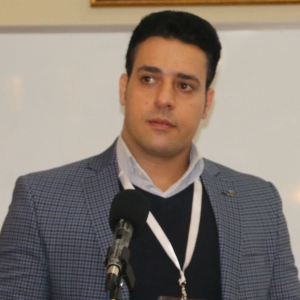Title : Reactive contaminant transport modeling in a filled-fractured system with intervening rock matrices: Case examples of tritium and uranium
Abstract:
While fractures are commonly filled in the subsurface, they have received little attention in terms of flow and solute transport. This study presents a semi-analytical solution for a reactive contaminant in a five-layer fracturematrix groundwater system characterized by a thin rock matrix separating the fractures, which are taken to be filled with sediments. Under conditions of steady groundwater flow using the Laplace transform for two scenarios of two-dimensional unilateral and three-dimensional radial flows, the solutions have obtained that account for longitudinal advective transport in the mobile portion of fractures and transverse diffusion in the adjacent matrices. The mathematical models in the real-time domain are derived by numerically inverting the solutions from the Laplace domain and validated against both the numerical and existing semi-analytical solutions. Examples of the solution behavior are presented, which demonstrate an increase in the fracture-mobile/fracture immobile porosity ratio tends to increase the solute concentration in the adjacent matrices, particularly under unilateral flow rate, because in addition to the groundwater velocity, Peclet number, and hydrodynamic dispersion coefficient, the ratio of retardation factor to hydrodynamic dispersion coefficient also plays a significant role in solute transport. Compared to the fracture, the solute behavior in the matrices, particularly under the unilateral flow case, is more sensitive to changes in the parameters. The porosity of the rock matrix has a twofold effect since as porosity is increased, the retardation factor decreases while storage capacity increases. A thinner middle matrix in addition to a lower peak in tritium and uranium concentrations inside the whole system over long-time periods is further accompanied by a quick overlapping the concentration penetration depth of adjacent fractures. The diffusion process in the rock matrix has been further identified as important as advection in the fracture for those repositories that are planned to safely dispose wastes for a long-time. The idea of combining multiple fractures as a single one with a double aperture is found to be only reasonable for the conservative solute under the steady-state or long-time conditions while it is not to be useful for the cases of sorptive solutes under the unsteady-state solute transport. The findings of this study can assist for simulating tracer tests as well as fate, transport, and remediation of groundwater contaminants in fractured rocks to better evaluate the safety degree of deep reservoirs in regard to disposal of nuclear and chemical wastes.


